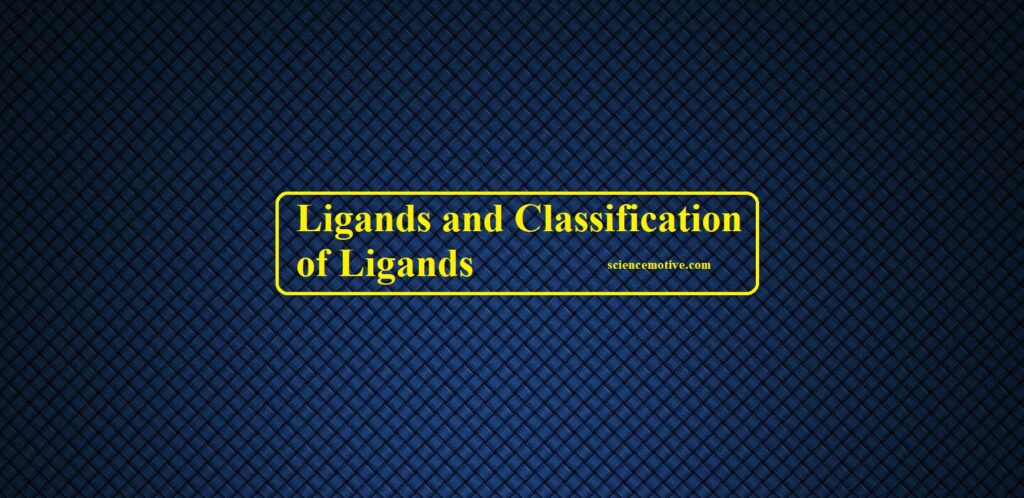Ligands and Classification of Ligands
Ligands and Classification of Ligands
Ligands: The ions or neutral molecules bound to the central atom/ion in the coordination entity are called ligands. For a species to act as a ligand, it can donate at least one pair of electrons to the central atom. The atom of the ligand which is directly bonded to the central atom or ion is called a coordinating atom or donor atom. Examples for ligands are Cl–, Br–, F–, I–, OH–, CN–, NC–, CNO–, NCO–, SO42-, NO3–, CNS–, H2O, NH3, CO, etc.
Types of ligands Based on the number of donor atoms the ligands are classified as follows:
a) Monodentate or unidentate ligand: A ligand that binds to the central atom/ ion through a single donor atom, is said to be a unidentate ligand. E.g.: Cl–, Br–, I–, OH–, H2O, NH3, CN–, NC–, SCN–
b) Bidentate (Didentate) ligands: A ligand that binds to the central atom through two donor atoms is called a bidentate ligand. E.g.: Ethane-1,2-diamine or ethylenediamine (H2NCH2CH2NH2) notated as ‘en’ and oxalate ion (C2O42–) notated as ‘ox’.
c) Polydentate ligand: A ligand that binds to the central atom through more than two donor atoms is called a polydentate ligand. E.g.: Triethylamine ammonia [N(CH2-CH2-NH2)3], Ethylenediamine tetraacetate ion (EDTA4–), etc. Ethylenediamine tetraacetate ion (EDTA4–) is an important hexadentate ligand. It can bind through two nitrogen and four oxygen atoms to a central metal ion. Ethylenediamine tetraacetate ion (EDTA4–).
Ligands are also classified as:
a) Ambidentate ligands: They are unidentate ligands that contain more than one donor atom. They can coordinate through two different atoms. Examples of such ligands are the NO2–, CN–, SCN–, CNO– NO2– ion can coordinate either through nitrogen or through an oxygen atom to the central metal atom/ion.
If the donor atom is N, it is written as NO2– and is called nitrito (N) and if it is O, it is written as ONO– and is called nitrito(O). Similarly, SCN– ion can coordinate either through sulphur atom (←SCN – thiocyanato) or through nitrogen atom (←NCS – isothiocyanato).
b) Chelating Ligands: Di- or polydentate ligands can bind to the central atom through two or more donor atoms and form ring complexes. Such complexes are called chelates and such types of ligands are said to be chelating ligands. Chelation is only possible from cis positions. Complexes containing chelating ligands are more stable than those containing unidentate ligands. For e.g. the complex [Co(en)3]3+ is a chelate and ethane-1,2-diamine (en) is a chelating ligand.

Ligands and Classification of LigandsLigands and Classification of Ligands





